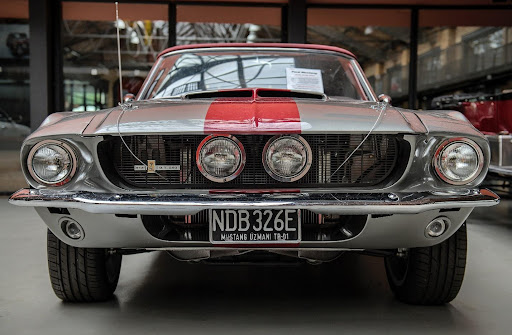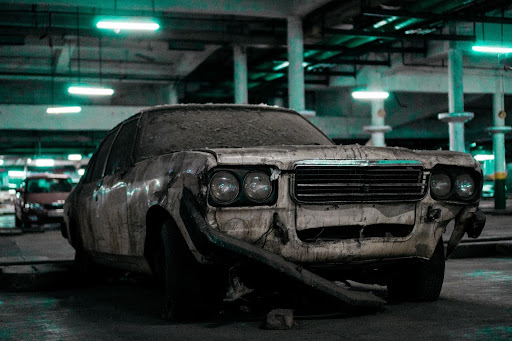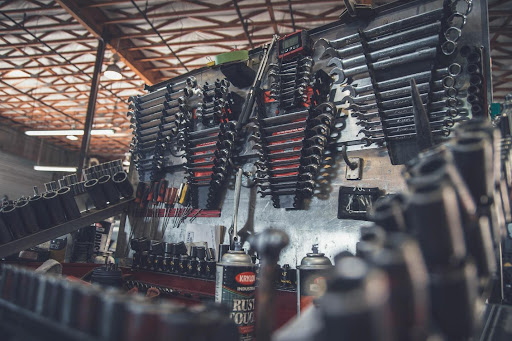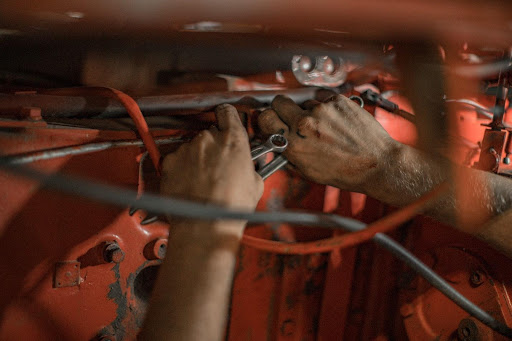
So you’re thinking about restoring a classic car? You’re probably wondering if you have the skills to pull it off and more importantly, do you have the budget to make it work? Nobody has unlimited income, but budget needs look different for everyone. So we’ve rounded out our top 8 money-saving tips for those of you looking to seek out a classic car restoration project as cheaply and inexpensively as possible. Based on your budget, pick and choose the tips that work for you for the most return and ones you’d rather not mess with. There’s typically a trade-off between time/convenience and money – so bear that in mind when you’re scoping your project and coming up with a completion timeline.
Tip 1: Do buy a project car that runs.
We can’t say this enough. Don’t let your heart decision burn a limitless hole in your wallet. While it may be tempting to buy something you fall in love with – or worse yet – a super rare find that doesn’t have a manufacturer or parts supplier any longer – it’s usually best to use a little more head than heart when choosing your project car.
So, first and foremost – make sure the car runs!
Sellers will make it seem like an easy fix:
“I had her up and running just last week,” they might say. Or “All she needs is the carburetor tuned up and she’ll run fine.”
Well, if that’s all it is, why haven’t you got it running then?
The fact is, neither of you know what it will take to get it running until you get it running. It might be a quick fix, and then again it might be a money pit. Don’t take your chances on the latter.

Price compare, research and negotiate
Look at a few different options and how flexible the seller is in negotiating the price. Here are a few factors that might give you negotiating power – or are at least red flags to move on to something else.
Inspect the car for extensive rust or frame damage
Extensive rust on the body or anywhere on the frame should be an automatic deal breaker. In fact, any frame damage at all should be a deal breaker. There’s a reason why these vehicles get counted as a total loss by insurance companies. Don’t risk your safety – and the cost of a complete and proper repair – with something like rusted-out body panels or frame damage. Now, if this is your forte, have at it, but buyer be warned.
LEARN MORE: How Much Rust Is Too Much? (And How to Fix It)
LEARN MORE: 7 Signs of Car Frame Damage
Tip 2: Do plan your project with a timeline schedule
Sticking to a timeline for your individual tasks helps you stay organized and focused, plus it prevents random or spontaneous parts purchases, project stalls or roadblocks.
Because the two go hand in hand, you should map out your project calendar and timeline along with your budget. Keep in mind that you’ll have to account for the extra time for projects you wish to save money on by doing yourself.
Having a project calendar separated by smaller tasks helps you keep purchases in line with your game plan. It can be very tempting to browse parts sites in your downtime and make a purchase decision on the fly. This wastes time and money.

Tip 3: Don’t buy parts ahead of time.
Piggybacking off of tip 2, be sure to source parts as you approach that step in the project. This will give you a better idea of what you need when you need it – nothing more, nothing less.
Once you actually dive into a task by removing components and disassembling pieces, you’ll get a much clearer view of which parts you need. This is the ideal time to source them.
Tip 4: Don’t buy all of your tools new.
It’s tempting – and exciting – to get everything new when you’re jazzed up about your project, but the price of specialty tools can add up to big expenses very quickly.
Check out online auction sites, yard sales and thrift stores and get what you can there before buying from your favorite local hardware store.
Specialty tools like sheet metal scissors, electrical tools (air compressors, voltage checkers), welding (welder or blowtorch), engine cranes and engine stands, and car jacks, might be borrowed if you have a family member or friend who’s willing to lend some things to you.
Source tools on your auto forums and chat with other car enthusiasts for tips on how they source their tools (or even find someone willing to sell, trade, or borrow).

Tip 5: Do buy parts used, by trade, and aftermarket.
There are three ways you can source parts for your car on a limited budget: buy used, consider trade, and price shop between OEM and aftermarket.
Your local junkyard or salvage yard, Facebook marketplace, eBay, or even online forums are good places to source used parts inexpensively.
Some sellers are simply curious and looking to trade, which may be an option worth considering.
Finally, don’t get caught up in the purity and authenticity game. You can find aftermarket equipment that functions way better, and in many cases looks more aesthetically pleasing, than original factory parts. Consider both options to see where you can get the best deal.
LEARN MORE: Aftermarket vs OEM Car Parts: Is the Extra Cost Worth It?
Tip 6: Do sell old or unused parts online.
You might be taking out parts you no longer need or want that are still functional. Get some of that money back by offering the parts up for sale on a site like eBay or Facebook marketplace.
Remember, you’re pricing to sell quickly – not turn a profit. To get it out and get some money back, price your items fairly and competitively.
Or maybe you skipped our advice in tip 3 and bought new parts ahead of time that you found you don’t really need (go read that again!). Check out the store’s return policy and see if you can’t exchange it for either cash or store credit. If the return window has lapsed, see previous tip for selling the item online.

Tip 7: Do use coupon codes and online sales.
Is there something that you just have to buy brand new? Source it on a few different sites to find the lowest price (remember to look at shipping costs). Try to find a discount code, or just sign up for the website mailing list and wait for seasonal sales and promotions. Getting free shipping on a part that weighs 50 lbs. can be huge cost savings.
We all know when the holidays are, and stores love to use them as a chance to offer sales. If Labor Day is around the corner, you already know you’ll probably get a great deal. Get on that mailing list to be notified, and make sure those emails aren’t landing in your “promotions” folder.
Remember when purchasing from online stores to check out the FAQs and learn their return policy. This can save time and headache if you find you’ve accidentally ordered the wrong part or you bought a part you don’t want or need. Even if you can’t get the cashback, most online stores offer a store credit on your next purchase.
Tip 8: Do perform “pre-tasks” and small jobs yourself.
You might not have the skills and tools to do a professional paint job, but you can save money by prepping the body – sanding it, and filling out dents and scratches – before your car gets to the auto paint guys.
Consider other tasks like this and use your skills, your owner’s manual, online forums, and YouTube to pick apart small jobs that you can do yourself to save on the cost of the full service.

Gauge the job by the level of difficulty based on your skill set and choose full service for things a bit beyond your scope while opting to DIY for tasks that you’re well equipped to handle on your own.
TECH TIP: DO YOUR HOMEWORK! Be sure you have the knowledge, tools, and safety equipment to take on any DIY tasks properly, or you’ll risk losing even more money with a botched job that needs a professional fix.
Not so great with brakes? Buy a pre-assembled brake kit to make the job foolproof.
An expert with wiring and upholstery? Skip outsourcing to an automotive electrician and run the cables and new fabrics yourself.
LEARN MORE: What’s the Difference between a pre-assembled kit vs unassembled parts? This video highlights two types of brake kits: a Master Power Brakes pre-assembled kit vs our competitor’s unassembled kit.
Stick to a Timeline, Plan Ahead Purchases, Negotiate Deals, and Choose Winning Battles
If you keep these 8 pro tips in mind, you can certainly complete your classic car restoration project on a small, inexpensive budget. But here’s one more tip just to be on the safe side: when you crunch all the numbers and come up with your final cost estimate, top that number off by 20%. It’s estimated that in many home improvement and recreational projects, we underbid our expenses by close to 34%. Adding that extra 20% ensures you have a small cushion just in case things don’t go as planned. And while chances are high that they won’t, it’s much easier to deal with a molehill versus a mountain.
Need help with sourcing the right pre-assembled brake kit for your car restoration project? Our tech team is here to help point you in the right direction. Even if you have parts or a kit that you didn’t buy from us, drop us a line and we’ll be happy to walk you through a project or find a solution with the parts and supplies you have available that are ideal for your build.
